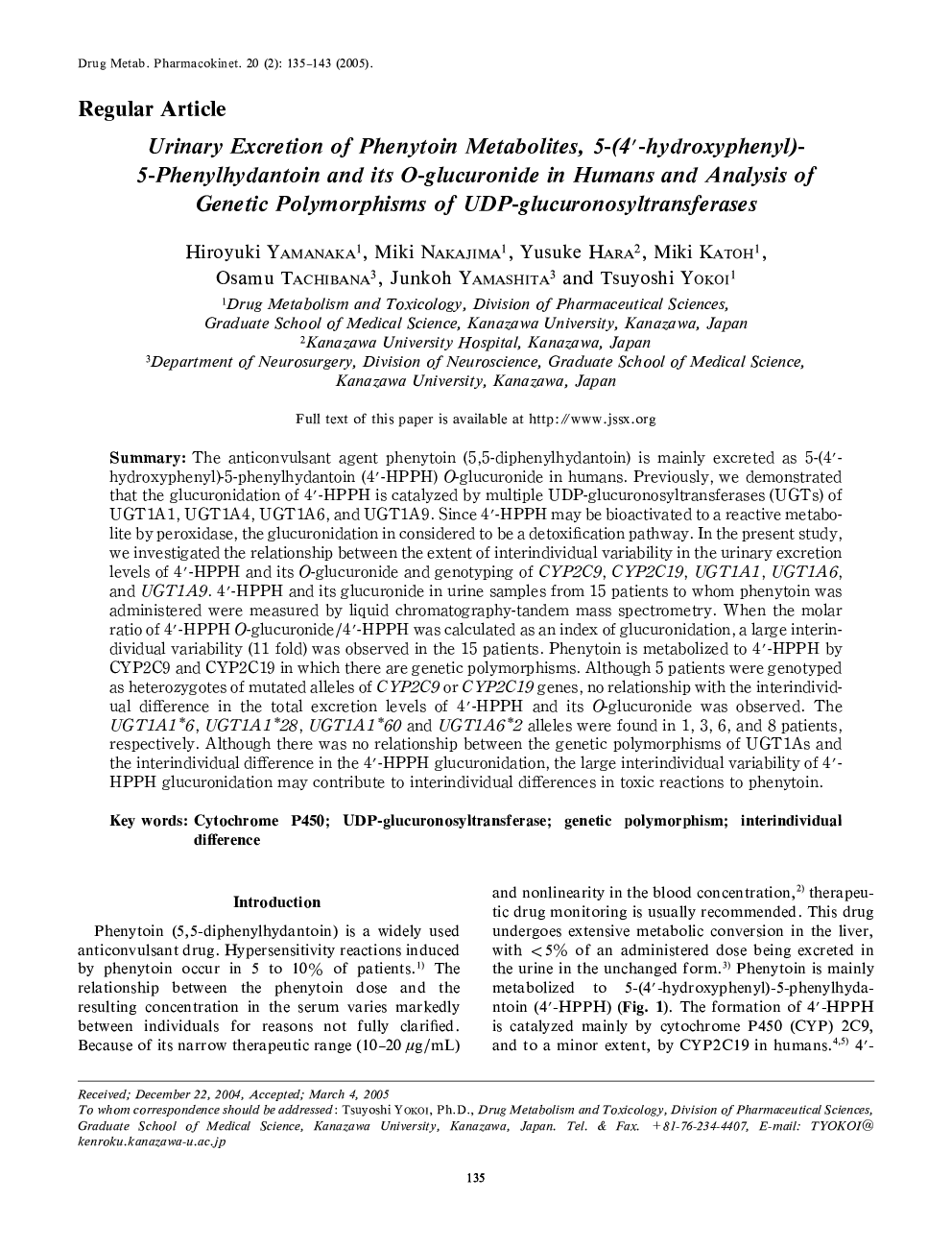| Article ID | Journal | Published Year | Pages | File Type |
|---|---|---|---|---|
| 8993099 | Drug Metabolism and Pharmacokinetics | 2005 | 9 Pages |
Abstract
The anticonvulsant agent phenytoin (5,5-diphenylhydantoin) is mainly excreted as 5-(4â²-hydroxyphenyl)-5-phenylhydantoin (4â²-HPPH) O-glucuronide in humans. Previously, we demonstrated that the glucuronidation of 4â²-HPPH is catalyzed by multiple UDP-glucuronosyltransferases (UGTs) of UGT1A1, UGT1A4, UGT1A6, and UGT1A9. Since 4â²-HPPH may be bioactivated to a reactive metabolite by peroxidase, the glucuronidation in considered to be a detoxification pathway. In the present study, we investigated the relationship between the extent of interindividual variability in the urinary excretion levels of 4â²-HPPH and its O-glucuronide and genotyping of CYP2C9, CYP2C19, UGT1A1, UGT1A6, and UGT1A9. 4â²-HPPH and its glucuronide in urine samples from 15 patients to whom phenytoin was administered were measured by liquid chromatography-tandem mass spectrometry. When the molar ratio of 4â²-HPPH O-glucuronide/4â²-HPPH was calculated as an index of glucuronidation, a large interindividual variability (11 fold) was observed in the 15 patients. Phenytoin is metabolized to 4â²-HPPH by CYP2C9 and CYP2C19 in which there are genetic polymorphisms. Although 5 patients were genotyped as heterozygotes of mutated alleles of CYP2C9 or CYP2C19 genes, no relationship with the interindividual difference in the total excretion levels of 4â²-HPPH and its O-glucuronide was observed. The UGT1A1*6, UGT1A1*28, UGT1A1*60 and UGT1A6*2 alleles were found in 1, 3, 6, and 8 patients, respectively. Although there was no relationship between the genetic polymorphisms of UGT1As and the interindividual difference in the 4â²-HPPH glucuronidation, the large interindividual variability of 4â²-HPPH glucuronidation may contribute to interindividual differences in toxic reactions to phenytoin.
Related Topics
Health Sciences
Pharmacology, Toxicology and Pharmaceutical Science
Drug Discovery
Authors
Hiroyuki Yamanaka, Miki Nakajima, Yusuke Hara, Miki Katoh, Osamu Tachibana, Junkoh Yamashita, Tsuyoshi Yokoi,
